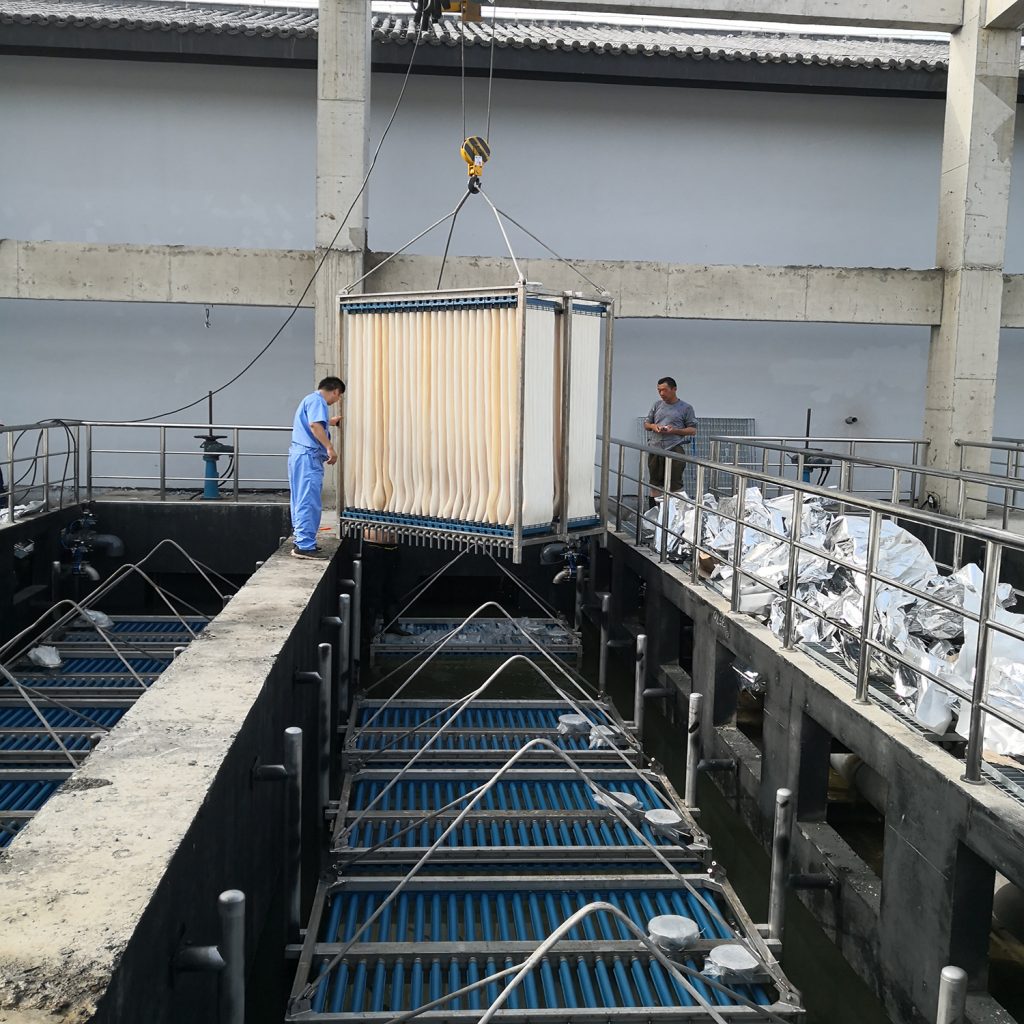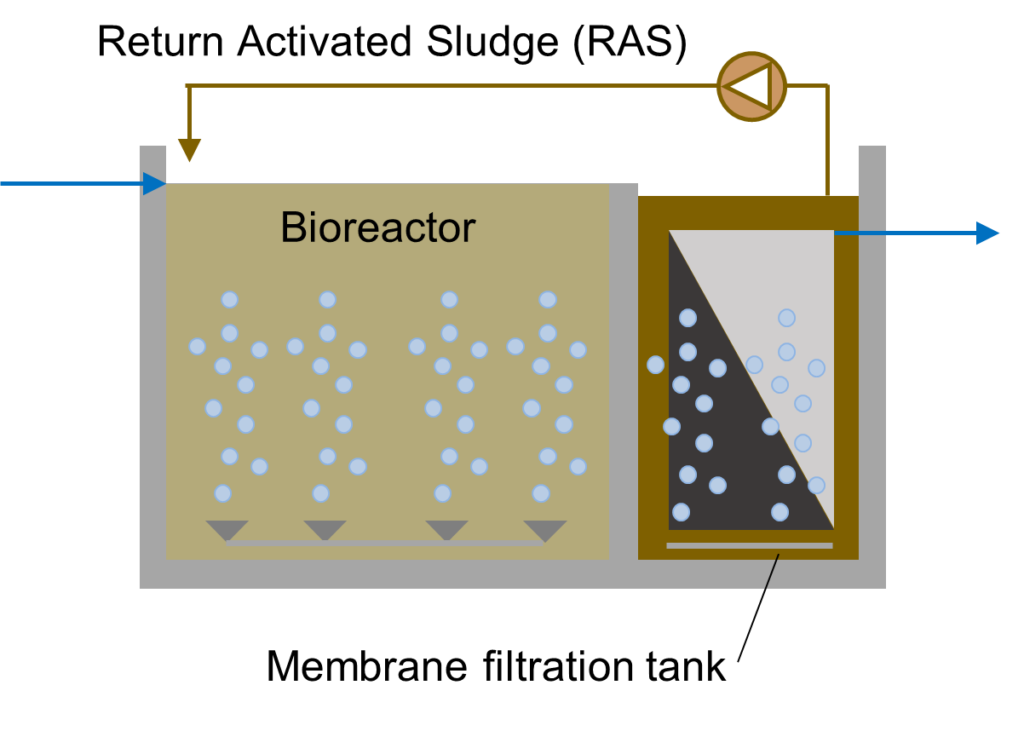Membrane Bioreactor Systems: A Key Technology for Water Reuse and Recycling
Membrane Bioreactor Systems: A Key Technology for Water Reuse and Recycling
Blog Article
Understanding Membrane Layer Bioreactors: The Future of Wastewater Therapy
Membrane layer bioreactors (MBRs) stand for a notable technology in the field of wastewater therapy, incorporating biological procedures with innovative membrane purification to enhance effluent high quality. As international water scarcity and rigid governing frameworks end up being significantly pressing problems, MBR innovation offers an effective action via its ability to reduce impact and maximize resource recovery.
What Are Membrane Bioreactors?

The core parts of MBR systems include a bioreactor where microbial activity happens and a membrane system that filterings system the combined alcohol. This twin capability enables the simultaneous degradation of raw material and solid-liquid splitting up in a solitary action. MBRs can run in both immersed and exterior arrangements, with immersed systems being extra usual as a result of their portable layout and functional performance.
The fostering of MBR modern technology has actually gotten grip in different applications, ranging from community wastewater treatment to industrial effluent management. MBRs are specifically useful in circumstances where room is restricted or rigid effluent quality standards have to be fulfilled. By preserving a high concentration of microorganisms within the bioreactor, MBRs boost the destruction of natural contaminants, thereby generating greater treatment efficiencies compared to typical approaches.
Key Advantages of MBR Innovation
The integration of organic treatment with membrane layer filtration in MBR systems uses countless advantages that establish it aside from traditional wastewater therapy methods. Among the primary benefits is the boosted effluent high quality. MBRs effectively eliminate put on hold virus and solids, accomplishing greater levels of purification that fulfill strict discharge criteria and facilitate water reuse applications.

An additional significant advantage is the minimized sludge manufacturing. MBR systems generate less excess sludge, causing reduced disposal costs and a decrease in environmental effect. The shut nature of the membrane layer system minimizes the risk of odor discharges and boosts total process control.
Lastly, MBRs are versatile and flexible, making them ideal for numerous wastewater kinds, consisting of industrial and municipal sources. The ability to integrate with sophisticated treatment innovations additionally boosts their performance, making MBRs an encouraging remedy for the future of wastewater monitoring.
Obstacles and Limitations of MBRs
While MBR modern technology supplies numerous benefits, it additionally encounters numerous obstacles and constraints that can affect its extensive adoption. One considerable challenge is the high capital and operational prices related to MBR systems. The first financial investment for membrane materials and the necessary framework can be significant, making it much less available for smaller municipalities try this or sectors.
Furthermore, membrane fouling continues to be an essential problem that can decrease system performance and rise maintenance demands. Fouling takes place when solids, natural matter, or microbes collect on the membrane surface area, causing decreased permeability and calling for regular cleansing or substitute.
Another constraint includes the complexity of the modern technology. MBR systems require skilled workers for operation and upkeep, which can be a barrier in areas with limited technical know-how. The disposal of invested membrane layers presents environmental worries, as the products are usually not naturally degradable and can add to squander monitoring challenges.
Finally, while MBRs can properly treat a vast array of wastewater, they may not appropriate for all applications, particularly those with high focus of fats, oils, and oils, necessitating additional study and innovation to attend to these constraints.
Applications of Membrane Bioreactors
In various markets, membrane layer bioreactors (MBRs) have actually become a flexible option for wastewater therapy (Membrane Bioreactor). Their applications span community, industrial, and farming setups, showcasing their flexibility and performance in diverse environments. In community wastewater therapy plants, MBRs dramatically boost effluent quality, allowing for water reuse and decreasing the environmental effect of released wastewater
Industrially, MBRs are utilized in food and drink handling, fabric production, and pharmaceutical manufacturing, where they successfully deal with high-strength waste streams. Their capability to deal with changing tons and differing pollutant concentrations makes them especially important in these industries. Furthermore, MBRs help with the removal of pathogens, suspended solids, and natural issue, adding to conformity with strict discharge policies.
In agriculture, MBRs are increasingly used for dealing with farming overflow and livestock wastewater, making it possible for the healing of nutrients for fertilizer production. They likewise help in the treatment of greywater for irrigation, promoting lasting water administration methods.
The flexibility of MBRs is further shown by their combination with other technologies, such as anaerobic food digestion and advanced oxidation processes, boosting general performance and source recuperation in wastewater therapy systems.
The Future of Wastewater Treatment
Advancements in modern technology and a growing emphasis on sustainability are forming the future of wastewater treatment. Membrane layer bioreactors (MBRs) exemplify this shift by incorporating biological therapy processes with membrane layer filtering, resulting in high-grade effluent appropriate for reuse. The trend in the direction of circular economic situations is triggering centers to embrace MBRs for their ability to recuperate resources, such as water and nutrients, from wastewater.
Advancements in membrane products and configuration are improving the efficiency and durability of MBR systems, reducing functional costs and energy intake. Smart innovation assimilation, including real-time tracking and automated control systems, is further enhancing efficiency and enabling anticipating upkeep, thus lessening downtime.
Moreover, social expectations web and regulatory stress are pressing sectors and municipalities to embrace even more lasting practices. Membrane Bioreactor. The shift in the direction of decentralized wastewater therapy solutions is acquiring traction, permitting local treatment that decreases transportation prices and power usage
Conclusion
Membrane bioreactors (MBRs) represent a transformative technique to wastewater therapy, incorporating organic processes with advanced membrane innovation. The benefits of MBRs, consisting of boosted effluent top quality, reduced spatial requirements, and lower sludge production, position them as a practical option amidst expanding urbanization and more stringent ecological laws. Regardless of existing obstacles, the ongoing technology in membrane layer products and functional approaches assures to strengthen the efficiency and fostering of MBRs, guaranteeing their essential function in the future of lasting wastewater monitoring.
Membrane layer bioreactors (MBRs) stand for a go to website significant innovation in the field of wastewater therapy, incorporating organic processes with advanced membrane layer purification to boost effluent high quality.Membrane bioreactors (MBRs) combine biological therapy procedures with membrane filtration to effectively deal with wastewater.The assimilation of biological treatment with membrane layer purification in MBR systems uses various advantages that establish it apart from standard wastewater treatment methods. Membrane layer bioreactors (MBRs) exemplify this shift by integrating organic treatment processes with membrane layer filtering, resulting in premium effluent suitable for reuse.Membrane layer bioreactors (MBRs) represent a transformative approach to wastewater therapy, integrating organic processes with advanced membrane layer technology.
Report this page